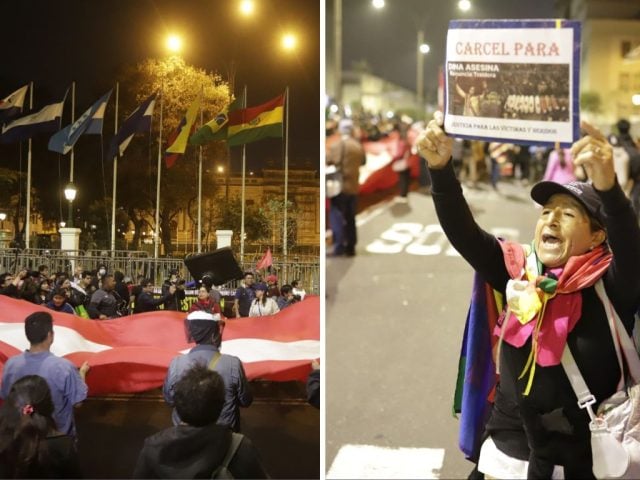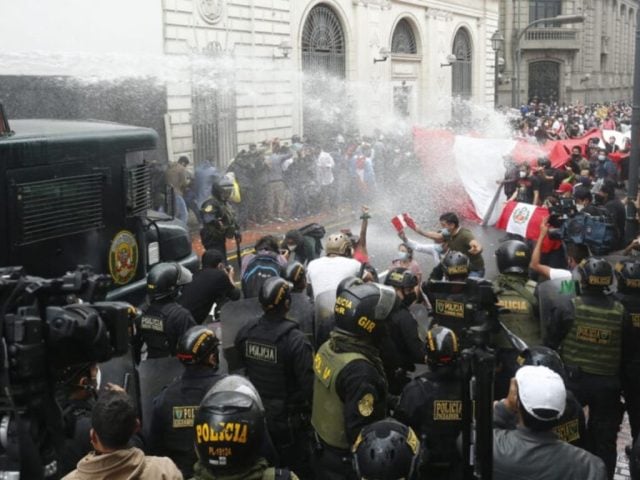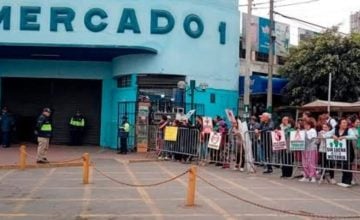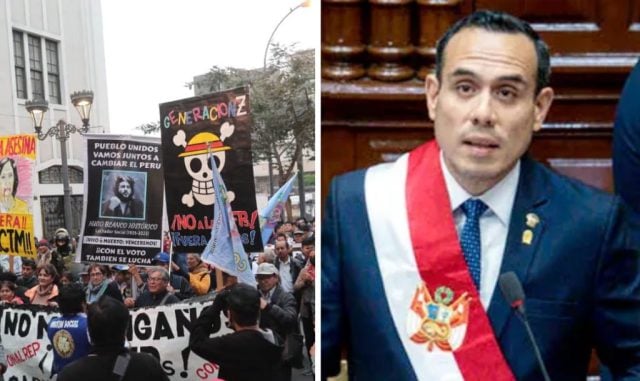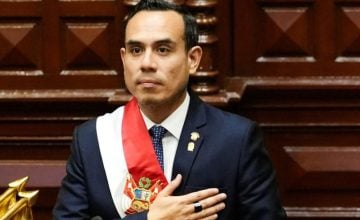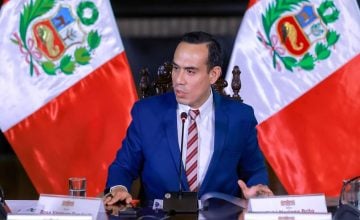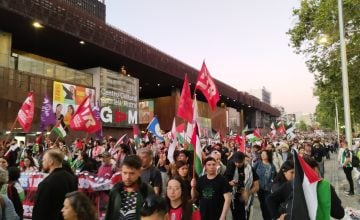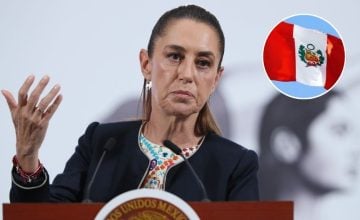A human tide—largely made up of Gen Z demonstrators—flooded downtown Lima on Saturday in a mass march centered on the Congress of the Republic. The peaceful mobilization channeled mounting public outrage over rampant insecurity, contract killings (sicariato), widespread extortion, and the government of Dina Boluarte, whose agenda many Peruvians view as regressive.
The day began at the emblematic Plaza San Martín, a historic hub for civic protest. From there, demonstrators carrying signs and chanting slogans unfurled a giant flag along Nicolás de Piérola Avenue before moving in an orderly column toward Abancay Avenue.
“The choice of route was no accident: Peru’s Parliament has become a symbol of public rejection and the focus of youth demands,” reported the Peruvian outlet Caretas.
The march advanced to the Congress of the Republic, where the National Police of Peru (PNP) had set up barricades and a heavy security cordon, citing the need to prevent potential incidents. Even so, the massive demonstration remained peaceful.
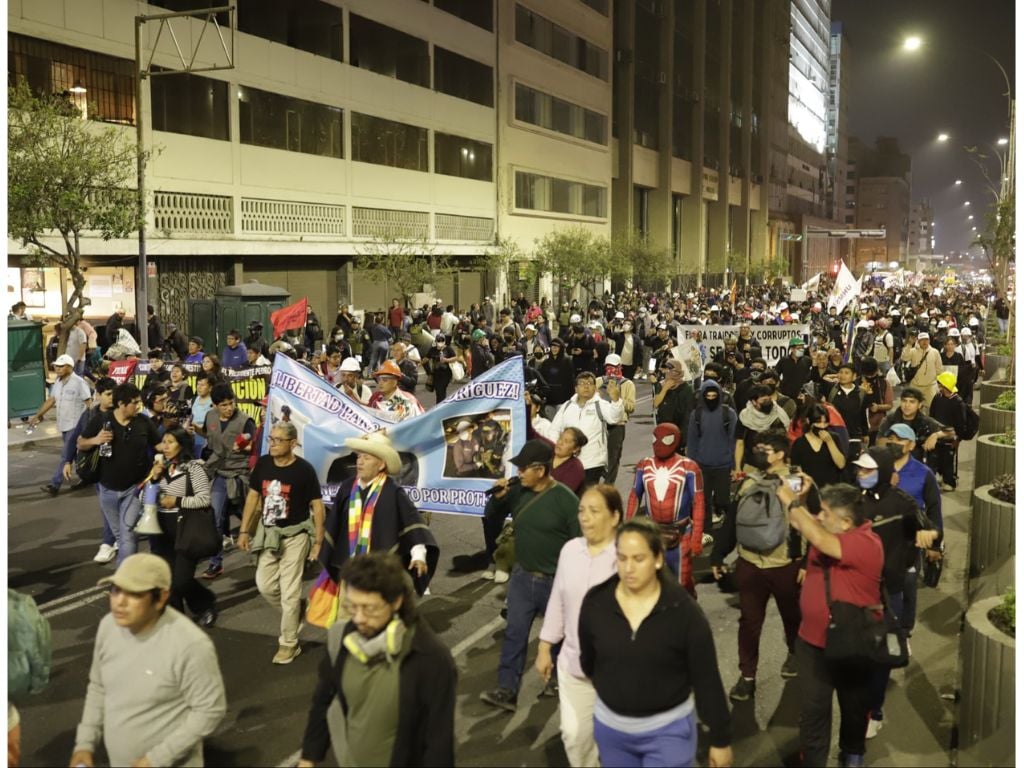
Generation Z’s three core demands
Students from the National University of San Marcos joined other social groups to shape a movement built around three central pillars, according to spokespeople for Generation Z.
The first demand is a resounding rejection of unchecked public insecurity, contract killings, and the wave of extortion affecting regions across the country.
Second, protesters are pressing Boluarte to design and implement effective public policies to confront crime and reverse the deterioration of security.
Third is widespread public discontent with laws approved by Congress—most notably the controversial measure that sought to force thousands of young people to join private pension funds (AFPs), which was ultimately withdrawn under social pressure.
The momentum from that initial victory—when the pro-AFP bill was pulled—continues to fuel civic engagement. “We cannot allow the future of young people to be mortgaged to private interests, nor accept the normalization of insecurity in our country,” said one protest spokesperson in remarks cited by Caretas.
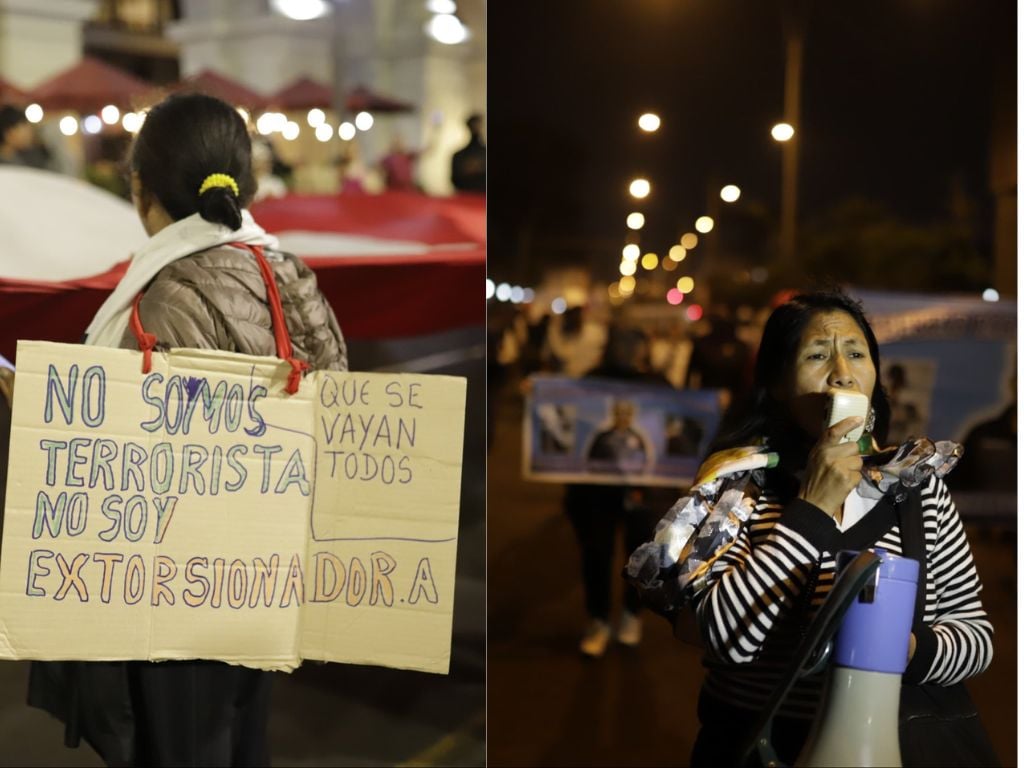
Boluarte government’s response
As the march unfolded, reactions from Boluarte’s inner circle came swiftly. Transport and Communications Minister César Sandoval issued a scathing rebuke, labeling protesters the “Degeneración Z” and accusing them of damaging public spaces in prior demonstrations.
«Hay que ser objetivos, esta ‘Generación Z’, para mí es la ‘Degeneración Z’», he said, asserting that members of this group and young people taking part in the mobilizations are being manipulated by alleged radical sectors seeking to destabilize the Executive and sow anarchy.
He added that such situations arise as part of attempts to destabilize the Executive by radical movements that seek only anarchy.
The response from the streets was immediate and forceful. In front of the heavily guarded Congress, movement spokespeople were unequivocal: “Our protest is legitimate. We’re in the streets because the state has failed us. This country cannot continue to be governed with its back to the people.”
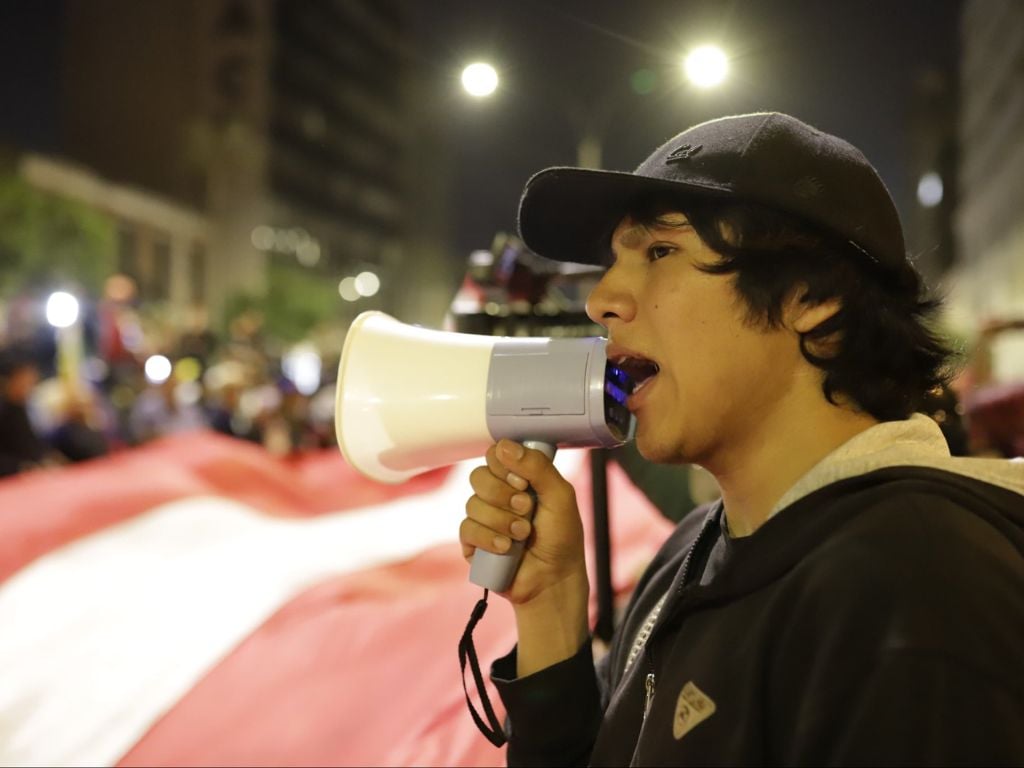
A new political generation
Generation Z—mainly those born from the mid-1990s to the early 2000s—has emerged as an unexpected and influential political actor in Peru. Their rise has coincided with deep distrust of institutions, broad discontent with the traditional political class, and sharp criticism of the Dina Boluarte administration.
“Sociologists note that this hyperconnected generation, mobilized through social media, is defining a new kind of activism: decentralized, fast-moving, and focused on concrete causes. Public security, corruption, and the defense of their rights—amid what they view as a state captured by private interests—top their agenda,” Caretas reported.
Where does the protest go from here?
The challenge for Dina Boluarte’s government is to deliver concrete measures and policies that address the demands of a public that feels unrepresented and alarmed by a worsening security crisis. At the same time, Congress continues to suffer low approval ratings and persistent infighting.
For now, Gen Z–led protests are gaining momentum and widening their reach in Peru, giving visibility to dissatisfaction that extends well beyond youth.
Worker groups, social organizations, and unions have signaled they intend to join future mobilizations, as rejection of Boluarte continues to climb.
